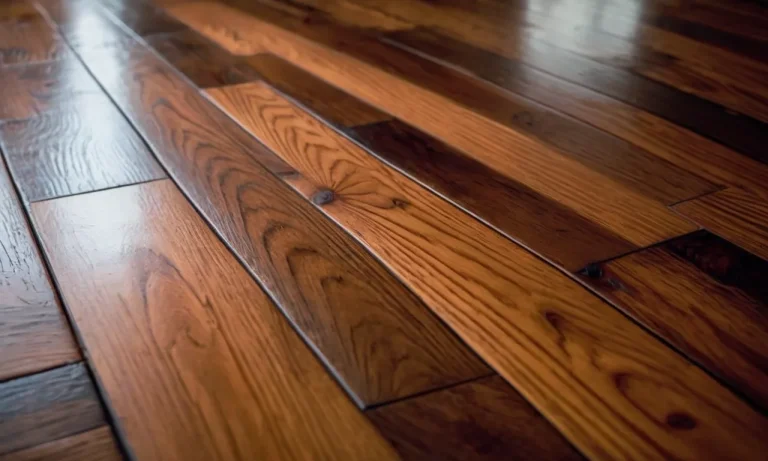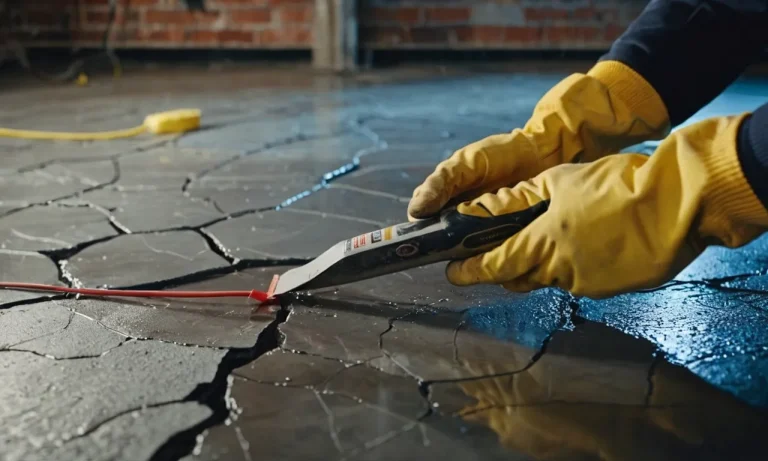How To Soften A Paint Brush For Smooth Strokes
If you’ve ever struggled with stiff, scratchy paint brushes that leave visible brush strokes, you’re not alone. Learning how to properly soften artist paint brushes is crucial for achieving smooth, blended strokes and avoiding frustration.
Here’s the quick answer: Soak the brush in warm water to loosen the bristles, then reshape and allow to fully dry. Condition with brush soap after each use. Read on for the complete guide on how to soften paint brushes for flawless blending.
In this comprehensive guide, we’ll cover everything you need to know about softening both natural and synthetic paint brushes. You’ll learn proper techniques for initial conditioning, mid-project softening, and post-use care.
With the right approach, you can restore old brushes and maintain the perfect supple texture for all your artistic endeavors.
Select High-Quality Brushes
When it comes to achieving smooth strokes with your paint brush, selecting the right brush is crucial. Investing in high-quality brushes can make a significant difference in the outcome of your artwork. Here are some factors to consider when choosing brushes:
Natural Hair Bristles vs Synthetic
One important decision to make is whether to opt for natural hair bristles or synthetic bristles. Natural hair brushes, such as those made from sable or squirrel hair, are known for their ability to hold more paint and provide a smoother application.
On the other hand, synthetic brushes, made from materials like nylon or polyester, are more durable and easier to clean. Consider the nature of your project and personal preference when making this choice.
Invest in Professional-Grade
While it may be tempting to go for the cheaper options, investing in professional-grade brushes can greatly enhance your painting experience. These brushes are meticulously crafted to provide better control, precision, and a smoother stroke.
Additionally, they are often made with high-quality materials that result in improved durability and longevity. So, don’t hesitate to splurge a little on a brush that will elevate the quality of your artwork.
Match Brush to Paint Type
Another aspect to consider is matching the brush to the type of paint you’ll be using. Different brushes are designed specifically for oil, acrylic, or watercolor paints. Each type of paint has its own unique consistency, and using the appropriate brush will ensure optimal performance.
For example, oil paint requires stiffer bristles to handle its thicker texture, while watercolor paint necessitates softer bristles to achieve delicate washes.
By selecting high-quality brushes that suit your painting style and needs, you can greatly improve the smoothness and precision of your brush strokes. Don’t forget to take care of your brushes by cleaning them properly after each use to maintain their performance for years to come.
Condition New Brushes Before First Use
When you purchase a new paint brush, it’s important to condition it properly before using it for the first time. This will help ensure the brush performs at its best and allows for smooth strokes when applying paint. Here are some steps you can follow to soften a paint brush for smooth strokes.
Soak in Warm Water
The first step in conditioning a new paint brush is to soak it in warm water. Fill a container with warm water and submerge the brush in it for about 10 minutes. This will help to remove any residue or sizing that may be present on the bristles, making them more pliable and easier to work with.
Work Bristles Gently
After soaking the brush, gently work the bristles with your fingers or a brush comb. This will help to loosen and remove any remaining residue or sizing. Be careful not to apply too much pressure or rough handling, as this can damage the bristles.
Instead, use gentle strokes to ensure the bristles stay intact and maintain their shape.
Let Air Dry Completely
Once you have finished working the bristles, allow the brush to air dry completely. Place it on a clean towel or hang it upside down to ensure proper airflow. Avoid using a hairdryer or any other heat source to speed up drying, as this can cause the bristles to become brittle and lose their flexibility.
Apply Brush Conditioner
After the brush has dried, you can further condition it by applying a brush conditioner. Brush conditioners help to keep the bristles soft and flexible, making them easier to use and prolonging the life of the brush.
Apply a small amount of conditioner to the bristles and gently work it in with your fingers. Leave the conditioner on the brush and allow it to absorb for a few hours or overnight before using the brush for the first time.
By following these steps to condition your new paint brush, you can ensure that it is ready for smooth strokes and optimal performance. Remember to properly clean and store your brush after each use to maintain its quality and extend its lifespan.
Soften Mid-Project for Blending
When working on a painting project, it is important to have a paintbrush that is soft and pliable. This allows for smoother strokes and better blending of colors. Softening a paintbrush mid-project can be easily done with a few simple steps.
Swirl in Water to Loosen Bristles
To soften a paintbrush, start by swirling it in a container of water. This helps to loosen up the bristles and remove any dried paint that may have accumulated. Make sure to fully submerge the bristles in the water and gently swirl the brush around for a few seconds.
Pro Tip: If you are using water-based paints, you can also add a few drops of water to the bristles directly to help soften them.
Gently Reshape Tip as Needed
After swirling the brush in water, gently reshape the tip of the brush if needed. Use your fingers to carefully reshape the bristles into a point or a flat edge, depending on the desired stroke or effect.
This step is important to ensure that the brush maintains its shape and allows for precise strokes.
Pro Tip: If your brush has synthetic bristles, be careful not to apply too much pressure when reshaping the tip, as this can cause damage.
Dry Before Reapplying Paint
Before you can continue painting, make sure that the brush is completely dry. Excess water can dilute the paint and affect the consistency and color. To dry the brush, gently squeeze out any water using a clean cloth or paper towel. Allow the brush to air dry for a few minutes before reapplying paint.
Pro Tip: If you are in a hurry and need to dry the brush quickly, you can use a hairdryer on a low setting. Just make sure to keep the brush a safe distance away from the heat source to avoid any damage.
By following these simple steps, you can easily soften a paintbrush mid-project and achieve smooth strokes and seamless blending in your artwork. Remember to take care of your brushes by cleaning them properly after each use to ensure their longevity and optimal performance.
Maintain Softness with Proper Care
Keeping your paint brushes soft and pliable is crucial for achieving smooth brushstrokes and creating beautiful artwork. By following these simple steps, you can ensure that your brushes remain soft and in great condition:
Clean Thoroughly After Each Session
After each painting session, it’s important to clean your brushes thoroughly. Use warm water and a mild soap or brush cleaner to gently remove any paint residue from the bristles. Remember to always clean your brushes immediately after use to prevent paint from drying and hardening on the bristles. Rinse the brushes well and gently squeeze out any excess water.
Avoid using hot water, as it can damage the bristles.
Apply Brush Soap and Reshape
Once your brushes are clean, apply a small amount of brush soap or conditioner to the bristles. Work the soap into the bristles gently with your fingers or a brush cleaning pad. This will help to condition and soften the bristles, keeping them pliable and ready for your next painting session.
Reshape the bristles by gently reshaping them with your fingers or using a brush shaper to maintain their original shape.
Store Horizontally Once Fully Dry
After cleaning and reshaping your brushes, allow them to dry completely before storing. It’s important to store your brushes horizontally to prevent the bristles from becoming misshapen or bent. Placing the brushes upright in a container or jar can cause the bristles to splay out or become distorted over time.
For additional protection, consider placing a brush guard or wrapping the bristles in tissue paper.
By following these steps, you can extend the lifespan of your paint brushes and keep them soft and ready for your next artistic endeavor. Remember, proper care and maintenance are key to achieving smooth and flawless brushstrokes!
Conclusion
Learning how to soften paint brushes is an important technique for artists of all levels. With the proper initial conditioning, mid-project care, and post-use maintenance, you can keep brushes supple for flawless blending and strokes.
Invest in quality brushes, soak in warm water to loosen bristles as needed, and always store flat once dried. Follow these tips for paint brushes that are always soft and ready to help you create your next masterpiece.







